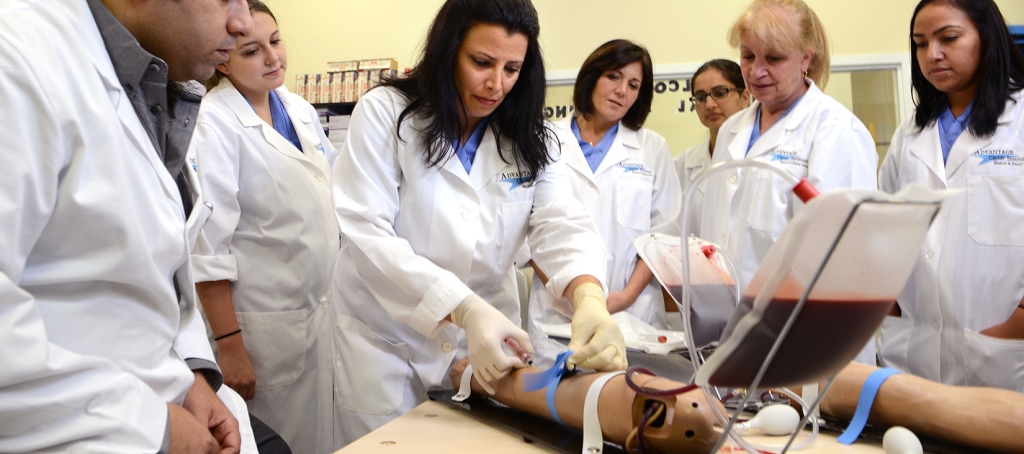Medical Assistant vs. Phlebotomist: Which Career Path is Right for You?
Choosing a career in the healthcare field can be both rewarding and overwhelming.Two popular options are becoming a Medical Assistant or a Phlebotomist. Both roles provide essential support to the healthcare system, yet they involve different responsibilities, skill sets, and career trajectories. in this thorough guide, we will explore the similarities and differences between these two critical healthcare professions to help you decide which career path might be best suited for you.
What is a Medical Assistant?
A Medical Assistant (MA) is a versatile healthcare professional who works alongside doctors, nurses, and othre healthcare workers to streamline clinic operations and enhance patient care. Their role encompasses both administrative and clinical tasks,allowing them to be a crucial part of the healthcare team.
Key Responsibilities of a Medical Assistant
- Scheduling appointments and managing patient records
- Taking patient histories and vital signs
- Assisting with examinations and procedures
- Administering medications and injections
- Handling billing and insurance processing
What is a Phlebotomist?
A Phlebotomist is a healthcare professional who specializes in drawing blood from patients for various medical tests, donations, or research purposes. Their role requires precision, skill, and a focus on patient comfort during the blood collection process.
Key Responsibilities of a Phlebotomist
- Collecting blood samples via venipuncture or capillary puncture
- Labeling and handling blood samples correctly
- Maintaining cleanliness and following safety protocols
- Explaining the blood collection process to patients
- Assisting in laboratory operations as needed
Education and Training Requirements
| Career Path | Education Requirements | Certification |
|---|---|---|
| Medical Assistant | Diploma or Associate’s Degree (1-2 years) | Certified Medical Assistant (CMA) optional but preferred |
| Phlebotomist | High school diploma or equivalent (short-term training programs available) | Certified Phlebotomy Technician (CPT) recommended |
Salary Comparisons
While salary can vary based on location, experience, and industry, below is a general comparison of the average annual salaries for both occupations:
| Career Path | Average Annual Salary (USD) |
|---|---|
| Medical Assistant | $36,000 – $48,000 |
| Phlebotomist | $31,000 – $44,000 |
Benefits of pursuing Each Career
Benefits of Being a Medical Assistant
- Variety of tasks keeps the job captivating
- Potential to work in various healthcare settings
- Opportunities for further specialization and advancement
Benefits of Being a Phlebotomist
- Shorter training programs allow for quicker entry into the workforce
- High demand for trained phlebotomists in hospitals and labs
- Ability to work flexible hours, including part-time options
Practical Tips for Choosing Your Path
- Evaluate your interests: Are you more inclined towards patient interaction and a variety of tasks (MA), or do you prefer focusing on a specific skill (Phlebotomy)?
- Research job opportunities in your area: Consider the demand for Medical Assistants versus Phlebotomists locally.
- Consider your long-term goals: Think about the potential for advancement and job stability in each field.
Case Studies and First-Hand Experiences
case Study: A Day in the Life of a medical Assistant
Jessica, a certified Medical Assistant, shares her experience: “Every day is different; one moment I might be taking a patient’s blood pressure, and the next I could be filing insurance claims. I love the variety!”
Case Study: A Day in the Life of a Phlebotomist
Michael, a phlebotomist, states: “Drawing blood can be intimidating for patients, but I enjoy helping them feel at ease. Each day brings new challenges and interactions.”
Conclusion
Choosing between a career as a Medical Assistant and a Phlebotomist depends largely on your interests, skills, and career aspirations. Both professions play critical roles in the healthcare system and offer unique benefits and challenges. By understanding the responsibilities, education requirements, and potential for growth in each field, you can make an informed decision that aligns with your career goals. Whether you prefer the dynamic nature of a Medical Assistant or the specialized skills of a Phlebotomist, both careers pave the way for a fulfilling future in healthcare.
